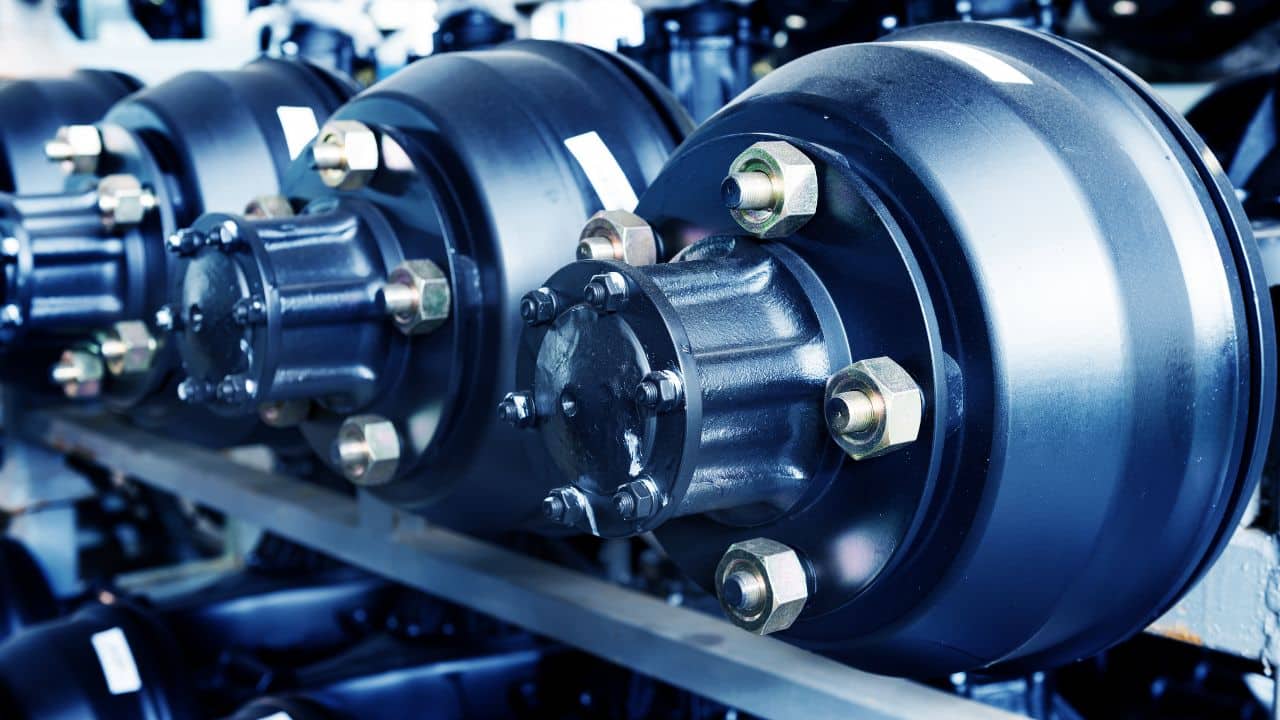Maintaining the safety and performance of a vehicle relies heavily on the components of the rear axle system, which carry the vehicle’s weight. Help with suspension while transferring power from the engine to the wheels efficiently.
It is vital to know when it’s time to replace these parts to ensure the operation and prevent expensive fixes. This guide outlines important signs that show when rear axle parts need replacement and offers insights on what aspects to assess when inspecting these components
Significant indications of usage and deterioration
Noticing wear signs in the axle components can help avoid bigger problems down the road. A clear red flag to watch out for is any noises coming from the back of your vehicle. Strange grinding or clunking sounds could mean that the bearings or other parts are wearing out. Moreover…when you feel vibrations while accelerating…it might be a sign of trouble with the axle.
Upon examination of the vehicle components such as the axle seal and shaft areas for any signs of leakage or damage can provide insights into wear and tear issues that may impact the overall performance of the vehicle over time.
Challenges with performance
Issues with performance can arise from worn-out rear axle components, leading to a drop in fuel efficiency, which may signal a malfunction in the axle and put a strain on the engine to operate efficiently. Moreover, issues with steering or handling may indicate misalignment of the axle or problems with suspension parts.
Keep an eye out for another indication. Tire wear could be a sign of trouble brewing with the rear axle components causing misalignment issues that affect how weight is distributed across the tires unevenly. This misalignment doesn’t just shorten the lifespan of your tires. Also jeopardizes the safety of your vehicle as a whole. Acting quickly to resolve these problems can help ensure a secure journey.
Routine upkeep
Regular maintenance is crucial, for extending the longevity of rear axle components. It’s important to check levels in the differential to prevent overheating and decrease wear. Applying grease to bearings and other moving parts helps reduce friction, improving performance and increasing the lifespan of the components.
Regular checkups conducted by a mechanic can catch issues on prevent them from getting worse, over time. Mechanics are trained to notice signs of wear that might go unnoticed in an once over. Staying on top of maintenance helps prevent breakdowns and expensive fixes.
Selecting High-Quality Replacement Components
Choosing the replacement parts is essential, for ensuring the durability and efficiency of your vehicle in the run. Be sure to go for rear axle parts that’re compatible with your vehicle’s specifications as using the parts can result in additional harm. Opting for top-notch aftermarket parts presents a budget substitute to equipment manufacturer ( OEM ) choices and delivers similar performance at a reduced cost.
Talking to a mechanic can be really helpful when deciding on the parts for your car’s specific requirements. Following the recommendations of manufacturers typically helps in making the choice. Guarantees that the parts are compatible and deliver optimal performance. Opt for high quality parts as they prove to be cost-effective, in the term, by decreasing the frequency of replacements needed.
DIYPersonal Versus Hiring a Professional for Replacements
Choosing between tackling a DIY project or opting for replacement largely hinges upon one’s skill level and access to tools at hand. Individuals with expertise may find swapping out specific axle parts manageable;. Securing the right tools and know-how is crucial, to guaranteeing a seamless installation and alignment process.
To ensure the task is completed accurately and swiftly enlisting the services of a professional is advisable. Car mechanics have the required knowledge and equipment, for fixes which minimizes the chances of errors. Carefully evaluating the advantages and disadvantages of each choice facilitates an informed decision tailored to the circumstances.
In summary
Knowing when it’s time to change axle components and how to identify warning signs is crucial for keeping your vehicle safe and running smoothly. Spotting indications of wear and tear and tackling any performance problems promptly while staying on top of maintenance can help avoid expensive repairs. Opting for high-quality replacement parts and deciding between doing it yourself or seeking help play roles in ensuring your vehicle’s long-term dependability. Taking steps can lead to an enjoyable and secure driving experience while also prolonging the lifespan of your vehicle.










































